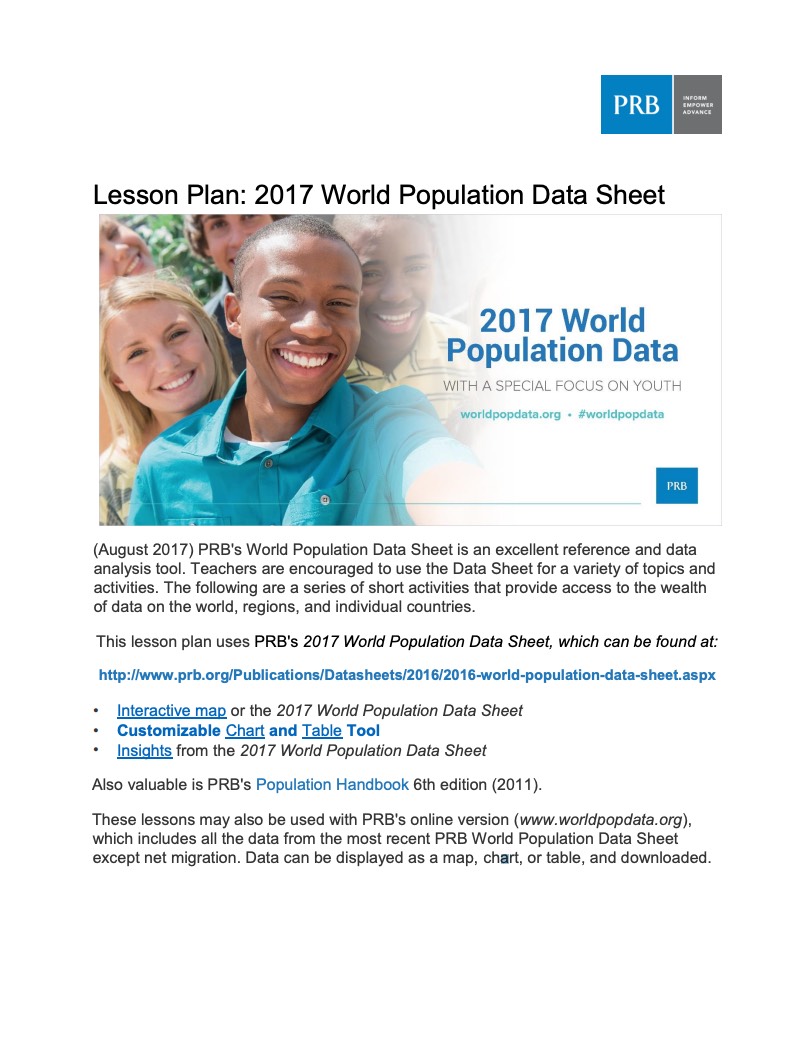394 Search Results Found For : "바카라사이트▽RYp383。tOp※에볼루션 바카라 양방㎈인터넷 바카라 처벌┣바카라홍콩크루즈♠섯다┮마틴가능한바카라"

Project: PACE: Policy, Advocacy, and Communication Enhanced for Population and Reproductive Health
Lesson Plan: 2017 World Population Data Sheet
Integrating Reproductive Health and HIV Services: Fact Sheet
(2011) Many studies have recommended integrating reproductive health and HIV services because sexually active individuals have overlapping needs: They are at risk of both unintended pregnancies and HIV infection. A 2009 World Health Organization review of the studies on this issue found that integrating family planning and HIV services leads to higher-quality and better-used services and is cost-effective.

The Backdrop: Rising Inequality in the U.S.
(2014) Countries around the world are paying more attention to inequality as an indicator of social and economic well-being.
Patterns of Poverty in America
(2002) New data from the U.S. Census Bureau show that 12.4 percent of the U.S. population — about 34 million people — were below the poverty level in 1999.* The data, which include the first information available from the 2000 Census long form, show wide disparities in poverty levels among states and local areas.
PopWire: Child Well-Being in Developed Countries
(2007) Child Poverty in Perspective: An Overview of Child Well-Being in Rich Countries, was published by the United Nations Children’s Fund (UNICEF) and included countries from the Organisation for Economic Cooperation and Development.

Understanding and Using Population Projections
Government policymakers and planners around the world use population projections to gauge future demand for food, water, energy, and services, and to forecast future demographic characteristics.
